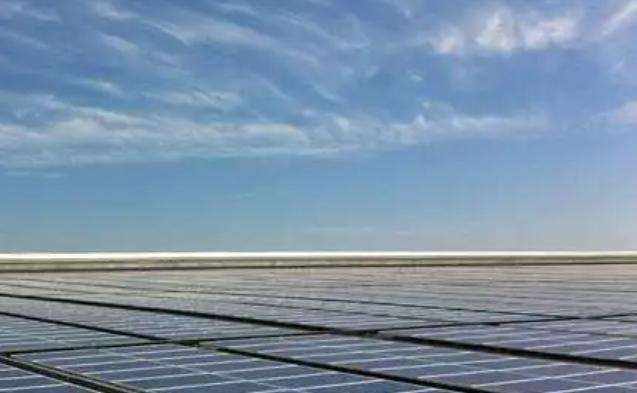This proposal is too big.
First of all, from the point of view of energy consumption, wind energy and solar energy are green energy. Both energy sources will basically have no impact on agriculture during the production process.
However, from the technical point of view of wind energy utilization, the selection, construction and operation of a wind farm will have a certain impact on the surrounding environment in addition to the surface area of the territory. I once heard that in a wind farm located in a mountainous area, to install wind turbines, trees were cut down, roads were built, land was fenced, and the surrounding environment was damaged. Theoretically speaking, the kinetic energy of the air should be reduced after wind power generation, so it will have a certain impact on temperature, water vapor, etc. attached to theair flow, and the corresponding climate will also change to a certain extent.
Solar energy production projects generally occupy a large area. During construction and the construction process, there will still be some impact on the environment. The solar power generation industry's greatest impact on the environment comes from the radiant panel manufacturing industry. This is a very polluting industry. Improper handling can cause considerable damage.
Excess wind energy cannot be stored with capacitors because the cost is too high and the technology for storing electrical energy by capacitors is not yet mature. Currently, supercapacitors are still concept products, with a limited range of applications and cost constraints that prevent their widespread use.
1. Advantages and disadvantages of energye windWind energy resources are large in quantity and high quality, and wind energy has outstanding advantages. As a clean energy source, wind power is environmentally friendly and pollution-free. Wind energy production does not harm the environment and is very respectful of ecological development and natural landscapes. Wind power generation has unique advantages in various power generation methods. The construction of a wind farm can be considered a once-and-for-all success and a huge profit. However, the disadvantages are also obvious. The wind force is unstable and unpredictable, the output voltage fluctuates, and the power produced by the wind turbine is also unstable, which affects the power quality after it is connected to the grid. Voltage fluctuations affect industrial and agricultural production. In order to reduce the impact bornnegative on production and lifespan after wind power is connected to the grid, wind power usually needs to be equipped with batteries, rectifiers and inverters.
2. Capacitor storageCapacitors used to store electrical energy are called supercapacitors, also called gold capacitors. Gold capacitors are an electrochemical component developed in the 1970s and 1980s to store electrical energy. Unlike batteries, no chemical reactions occur during the process of storing electrical energy. Its charging and discharging principle is the same as that of an ordinary capacitor, using two plates to absorb equal amounts of different charges.
The particularity of supercapacitors is that thanks to the porous activated carbon electrode and the structure of the electrolyte, the capacitor produced has a very large capacity and can accommodate a largequantity of charge. Compared to conventional batteries, supercapacitors charge extremely quickly and have strong high-current discharge capabilities. However, due to cost constraints and technical reasons, they cannot yet be promoted and used on a large scale. It is therefore impossible to store electrical energy for the production of wind energy.
In summary, wind power, as a clean and environmentally friendly method of producing energy, has both advantages and disadvantages. Although supercapacitors have great advantages in electrical energy storage, the technology is not yet mature enough to be widely used, so it cannot be used for energy-efficient storage of wind energy.














